Hengist And Horsa: Legendary Anglo-Saxon Warrior Brothers And Leaders Of First Settlers In Britain
A. Sutherland - AncientPages.com - According to very ancient poems, Odin's sons, Weldegg, Beldegg, Sigi, Skiold, Sæming, and Yngvi, became kings of Franconia, East Saxony, West Saxony, Sweden, Denmark, and Norway, and from them are descended the Saxons, Hengist and Horsa, and the royal families of the Northern lands.
 Hengist and Horsa arriving in Britain, by Richard Rowlands (1605). Public Domain
Hengist and Horsa arriving in Britain, by Richard Rowlands (1605). Public Domain
But one question is: who were the legendary warrior brothers Hengist and Horsa? Interesting is also whether they existed.
According to Anglo-Saxon tradition, these two heroes, Hengist and Horsa (meaning 'stallion' and 'horse'), were invited to Sub-Roman Britain by the British ruler Vortigern to help him defend against invading Scots and Picts attacking from the North.
After landing at "Wippidsfleet" (Ebbsfleet), Hengist and Horsa successfully drove off the invaders. It is said the two heroes played an essential part in the foundation of the kingdom of Kent.
Immediately after successfully fighting with the enemy, they received a land grant in Kent from Vortigern.
Hengist from John Speed's 1611 "Saxon Heptarchy". Image credit: Professor Liam Thompson - Public Domain
For ages after the arrival of the Saxons under the warlords Hengist and Horsa in 449 AD, the aboriginal inhabitants possessed the whole western coast of Britain. These people were engaged in continuous battles with the invaders.
Archaeological evidence has revealed traces of Germanic settlers in Canterbury in the late 300s; however, the main settlement probably took place in the 450s, under the leadership of the two warlord brothers, Hengest and Horsa.
Some historians have suggested that they are only mythical founding figures, divine twins like Romulus and Remus, rather than real people.
Hengest (also spelled Hengist) and Horsa are said to have been Jutes and sons of Wihtgils, a semi-legendary Jutish chieftain, according to the Anglo-Saxon Chronicle, one of the few literary sources for England's history during the period following the Roman presence and preceding the Norman invasion.
The brothers in Edward Parrott's Pageant of British History (1909). Image credit: Sir Edward Parrott - The Pageant of British History - Public Domain
According to the English historian and theologian Bede, the two brothers were Jutes, generally assumed to have come from Jutland in Denmark.
Hengest and Horsa arrived shortly after 449 with three shiploads of 'Angles or Saxons' at the invitation of Vortigern, king of the Britons (who flourished 425–450). They came to his allies to help him against the Picts, attacking from the North between 446 and 454 AD.
It needs to be specified, however, where, in Britain, this Vortigern had his seat. Was it located in the northwest, closer to the Picts region, or in the south?
The Chronicle also says that Hengest and Horsa fought against Katigern, the second son of Vortigern, near Epiford, and Horsa was killed at Aegelsthrep (possibly Aylesford, Kent) in 455.
The Venerable Bede mentions a monument to him located in east Kent; Horstead, near Aylesford, may be named for him; the Chronicle says that Hengist began to reign in 455 and that he fought against the Britons; it implies that Hengist died in 488.
Updated on Sep 19, 2023
Written by A. Sutherland - AncientPages.com Staff Writer
Copyright © AncientPages.com All rights reserved. This material may not be published, broadcast, rewritten or redistributed in whole or part without the express written permission of AncientPages.com
Expand for referencesReferences:
B. Yorke, Kings and Kingdoms of Early Anglo-Saxon England
More From Ancient Pages
-
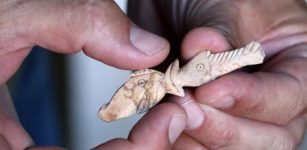 2500-Year-Old Objects Made From Goat Bones Discovered In Turkey’s City Of Aigai
Archaeology | Sep 17, 2020
2500-Year-Old Objects Made From Goat Bones Discovered In Turkey’s City Of Aigai
Archaeology | Sep 17, 2020 -
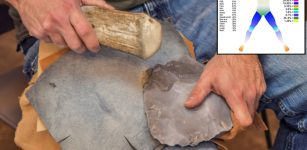 Early Humans Risked Life -Threatening Flintknapping Injuries – Long-Lasting Tradition
Archaeology | May 26, 2023
Early Humans Risked Life -Threatening Flintknapping Injuries – Long-Lasting Tradition
Archaeology | May 26, 2023 -
 Scientists Can Finally Answer What Bronze Age Daggers Were Used For
Archaeology | Apr 29, 2022
Scientists Can Finally Answer What Bronze Age Daggers Were Used For
Archaeology | Apr 29, 2022 -
 Ancient Roman Basilica Discovered Under Commercial Building In London, UK
Archaeology | Feb 21, 2025
Ancient Roman Basilica Discovered Under Commercial Building In London, UK
Archaeology | Feb 21, 2025 -
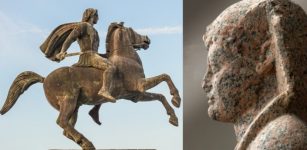 Alexander The Great Was Crowned Pharaoh And Declared Son Of God Amun
Ancient History Facts | Jan 4, 2019
Alexander The Great Was Crowned Pharaoh And Declared Son Of God Amun
Ancient History Facts | Jan 4, 2019 -
 Magnificent Pagodas In Indein Village And Undiscovered Secrets In The Myanmar Jungle
Featured Stories | Oct 9, 2020
Magnificent Pagodas In Indein Village And Undiscovered Secrets In The Myanmar Jungle
Featured Stories | Oct 9, 2020 -
 Did Etruscans Solve The Mystery Of Synchronicity And The Secret Language Of The Stars?
Ancient Mysteries | Jul 5, 2018
Did Etruscans Solve The Mystery Of Synchronicity And The Secret Language Of The Stars?
Ancient Mysteries | Jul 5, 2018 -
 Girl’s Ancient Tooth Solves One Of The Biggest Mysteries Of The Denisovans
Archaeology | May 17, 2022
Girl’s Ancient Tooth Solves One Of The Biggest Mysteries Of The Denisovans
Archaeology | May 17, 2022 -
 2,000-Year-Old Rare Sarcophagus With Human Remains Discovered In Rock-Cut Cave In India
Archaeology | Jan 18, 2018
2,000-Year-Old Rare Sarcophagus With Human Remains Discovered In Rock-Cut Cave In India
Archaeology | Jan 18, 2018 -
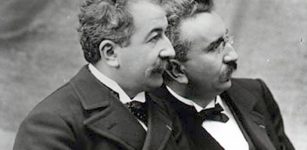 On This Day In History: The Lumière Brothers Presented Their First Film In Paris – On Dec 28, 1895
News | Dec 28, 2016
On This Day In History: The Lumière Brothers Presented Their First Film In Paris – On Dec 28, 1895
News | Dec 28, 2016 -
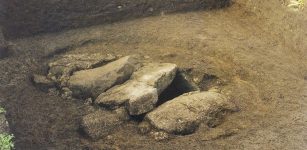 Mystery Of The 2,000-Year-Old Grave On The Isles Of Scilly Solved!
Archaeology | Jul 28, 2023
Mystery Of The 2,000-Year-Old Grave On The Isles Of Scilly Solved!
Archaeology | Jul 28, 2023 -
 On This Day In History: Battle Of San Domingo Was Fought – On February 6, 1806
News | Feb 6, 2017
On This Day In History: Battle Of San Domingo Was Fought – On February 6, 1806
News | Feb 6, 2017 -
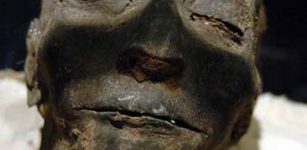 Nebiri, a ‘Chief of Stables’ – oldest case of heart disease in 3,500-year-old mummy
News | Aug 28, 2015
Nebiri, a ‘Chief of Stables’ – oldest case of heart disease in 3,500-year-old mummy
News | Aug 28, 2015 -
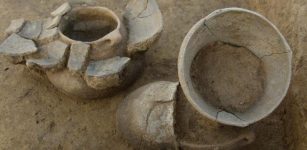 New DNA Study Links Early Europeans’ Cultural And Genetic Development Over Several Thousand Years
Archaeology | Aug 9, 2023
New DNA Study Links Early Europeans’ Cultural And Genetic Development Over Several Thousand Years
Archaeology | Aug 9, 2023 -
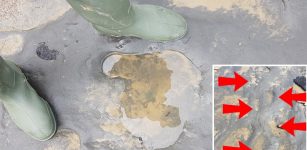 Oldest Footprints In Europe Belonged To A Mysterious 950,000-Year-Old Ancestor
Archaeology | Jul 22, 2019
Oldest Footprints In Europe Belonged To A Mysterious 950,000-Year-Old Ancestor
Archaeology | Jul 22, 2019 -
 Harappan Civilization Built Massive Protection Walls Against Tsunami 5,000 Years Ago
Archaeology | Jan 10, 2017
Harappan Civilization Built Massive Protection Walls Against Tsunami 5,000 Years Ago
Archaeology | Jan 10, 2017 -
 Voynich Manuscript: Ancient Book Nobody Is Able To Read
Artifacts | Jun 24, 2013
Voynich Manuscript: Ancient Book Nobody Is Able To Read
Artifacts | Jun 24, 2013 -
 Where Does The Expression ‘Saved By A Bell’ Come From?
Ancient History Facts | Oct 16, 2019
Where Does The Expression ‘Saved By A Bell’ Come From?
Ancient History Facts | Oct 16, 2019 -
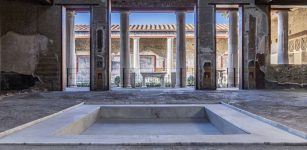 Look Inside A Restored Pompeii House – A Unique Glimpse Into Life In Italy’s Ancient City
Archaeology | Jan 11, 2023
Look Inside A Restored Pompeii House – A Unique Glimpse Into Life In Italy’s Ancient City
Archaeology | Jan 11, 2023 -
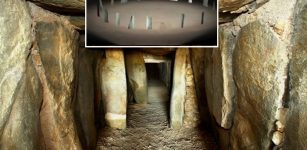 Dolmen de Soto: Unique Millennia-Old Underground Structure Remains A Puzzling Enigma
Featured Stories | Feb 10, 2022
Dolmen de Soto: Unique Millennia-Old Underground Structure Remains A Puzzling Enigma
Featured Stories | Feb 10, 2022


